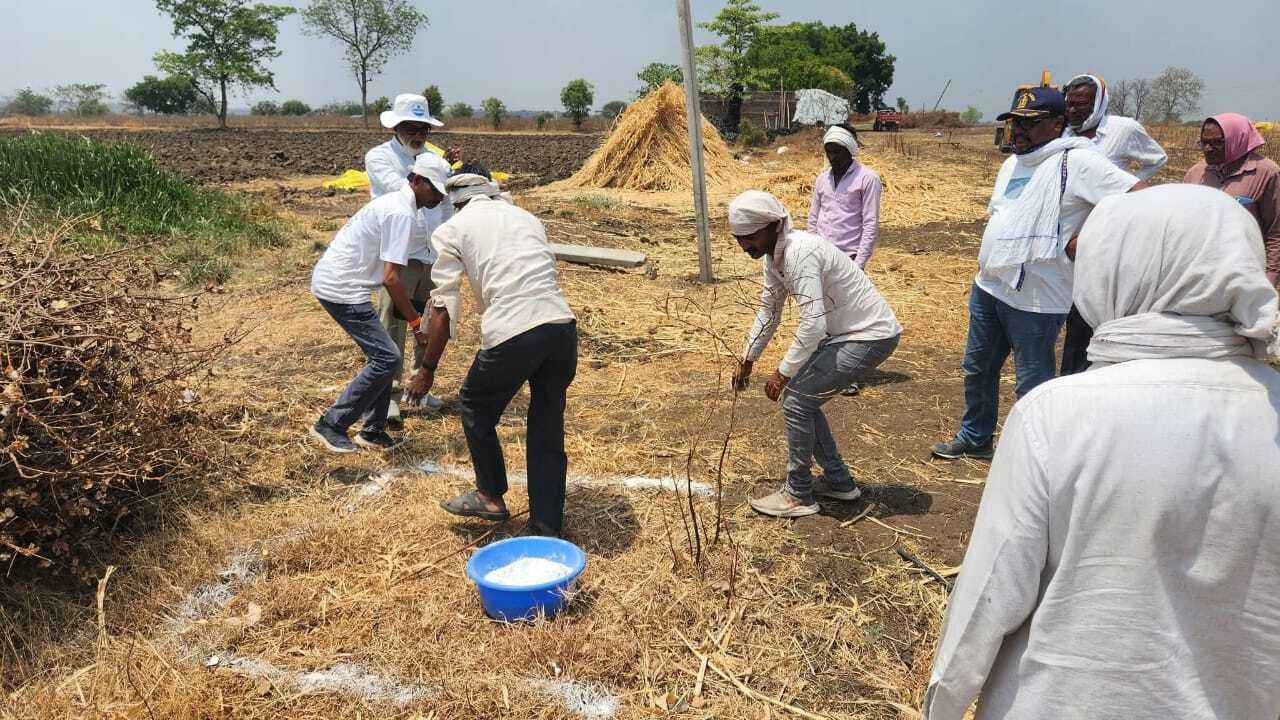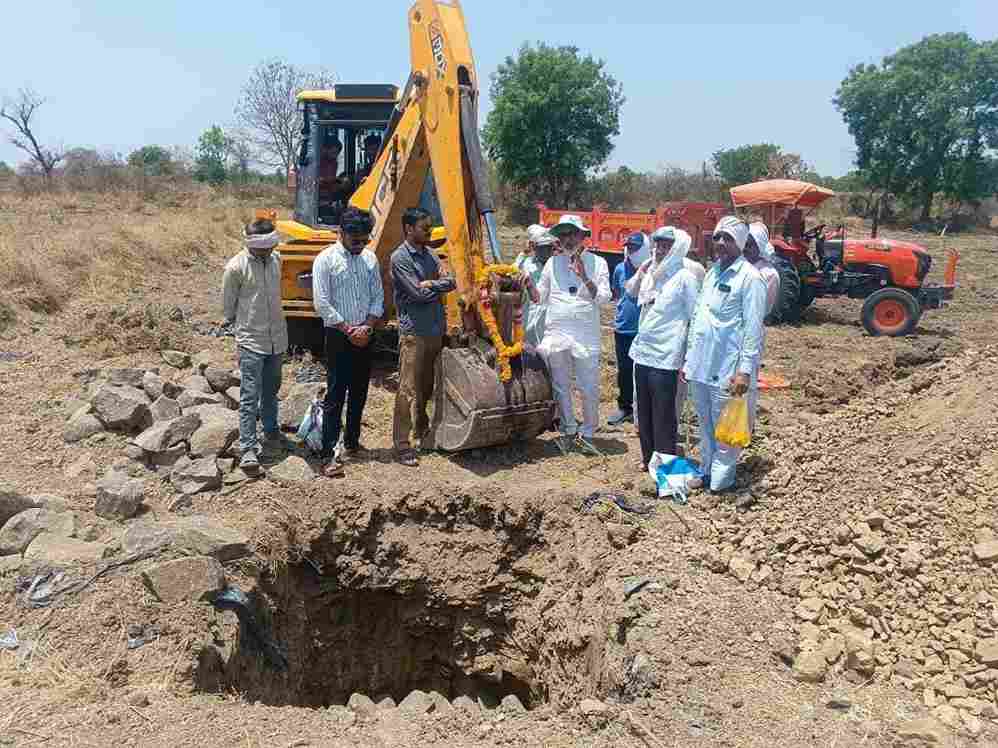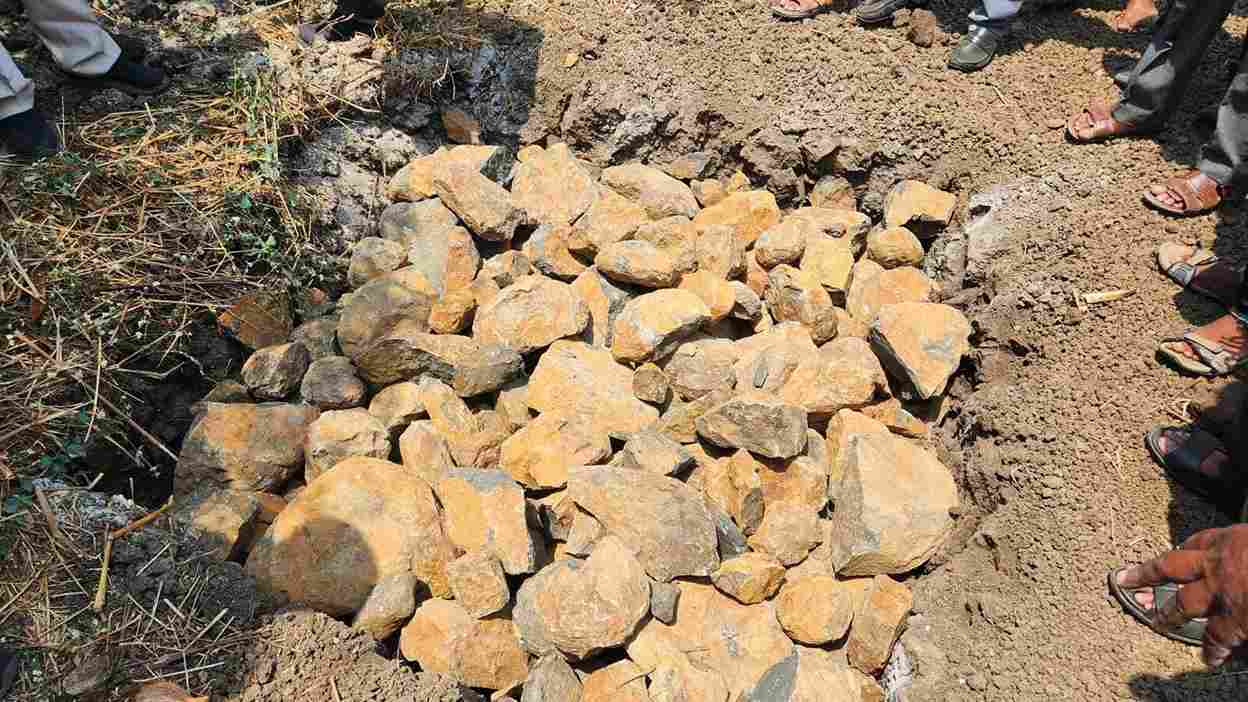How 1.75 Lakh Soak Pits Are Helping Maharashtra’s Farmers Grow Crops Without Tankers
Across the sunbaked talukas of Mantha and Partur in Jalna, Maharashtra, farming is more than just an occupation—it’s the lifeblood of the region. Cotton, soybeans, and pulses dominate the landscape, coaxed from the basalt-rich soil of this semi-arid belt.
For decades, farmers here have depended on dugwells and borewells to water their fields. But with groundwater levels plummeting and rainfall patterns shifting, survival has become a daily challenge.
Prabhakar Deshmukh, a farmer from Dhoksal village in Mantha taluka, exemplifies both the challenges and the progress seen in the region. Despite cultivating a diverse range of crops on his 40-acre farm, Deshmukh once faced severe water shortages during the dry months.
Between January and the onset of the monsoon, he required five water tankers each week—a costly necessity, as his one-acre pond could not meet his irrigation needs. For his outstanding contributions to agriculture, Deshmukh was honored with the Maharashtra state government’s “Krishi Bhushan” award. But since the implementation of the JalTara groundwater rejuvenation project, he has not needed a single tanker for the past two years.
 What began as a personal project soon grew into a regional phenomenon.
What began as a personal project soon grew into a regional phenomenon.
A similar story of revival comes from Pandhurna village. At 60, Parameshwar Shinde radiates quiet pride as he speaks of a bumper year in 2022—earning Rs 5 lakh from six acres of soybean, green gram, and vegetables.
“For nearly twenty years, I tilled my fields for little return,” he shares, “My sons had to take up odd jobs to support us. Now, we’re finally seeing the rewards.” His story echoes across the district.
These aren’t isolated successes—they’re part of a growing movement. With initiatives like JalTara, spearheaded by the Save Groundwater Foundation (SGF), a new model of rural resilience is taking root. Affordable, scalable techniques like rainwater harvesting and aquifer recharge are helping reverse decades of water stress. As tanks dry up less often and livelihoods flourish, communities that once teetered on the edge are rediscovering hope.
The vision and impact of JalTara
Dr. Purushottam Vayal, a former political science professor turned passionate water conservationist, recognised the devastating impact of recurring droughts on Maharashtra’s farmers. Inspired by the philosophy “Pani adhva, pani jirva” (hold water, let it percolate), he developed the JalTara grassroots movement to harness rainwater through innovative yet affordable methods such as soak pits.
Vayal began his experiment on his 60-acre farm, constructing simple yet effective pits layered with stones, gravel, and sand to capture rainwater and recharge groundwater. The results were immediate: wells that once dried up by December now brim with water, fields became more fertile, and orchards flourished where there had once been barren land.
He recalls, “At the edge of my fields in Watur village, where rainwater used to collect, I began laying recharge pits in March and April. Every acre had one soak pit, so I installed six in total. When the rains arrived in June 2020 and continued for a couple of hours, I rushed to the fields the next morning, jumping from puddle to puddle with an umbrella in hand. I was overjoyed to see that the rainwater had percolated into the ground.”
 Water awareness campaigns led to the deepening and widening of streams, drains, and rivers in Mantha and Partur talukas.
Water awareness campaigns led to the deepening and widening of streams, drains, and rivers in Mantha and Partur talukas.
What began as a personal project soon grew into a regional phenomenon. “We selected four villages—Meskheda, Murumkhed, Taltondi, and Limbkheda—and laid recharge pits in May 2021. That year, none of these villages needed water tankers in December,” says Vayal.
Water awareness campaigns led to the deepening and widening of streams, drains, and rivers in Mantha and Partur talukas, with Vayal at the forefront. Notably, in 2017, youth from ten villages were trained and subsequently revitalised 85 km of waterways, constructed dams, planted trees, and revived the Nangartas river, transforming these villages into water-rich communities.
“However, four years later, we found that the contour trenches we had dug were filled with silt, making them ineffective,” Vayal explains. “That’s when I realised the limitations of traditional watershed schemes.”
Addressing the water crisis at its core
Water scarcity and drought remain the root causes of distress for Maharashtra’s farmers. Of the state’s 44,000 villages, 28,000 face water crises. Farmers often struggle to harvest even the Kharif crop and must anxiously await the Rabi season. Recognising this, Vayal envisioned a way to intercept wasted rainwater from fields through suction pits. This vision gave rise to the JalTara programme in 2020.
Vayal’s idea took clearer shape through the influence of his friend Manu Nimbodhiri, a NRI settled in the United States who visited Maharashtra. Their collaboration led to the creation of an affordable, easily replicable technique suited for village settings: digging 4×4 feet wide and six to seven feet deep pits, layered with stones, gravel, and sand.
These recharge pits allow rainwater to bypass the topsoil and percolate directly into the groundwater table. Put simply, it’s about establishing a dense network of small recharge pits at the lowest point of every acre of farmland.
Proven results and scalable solutions
“Roughly 64% of all villages in Maharashtra are classified as water-scarce. Building dams, laying canals, or linking rivers are all time- and cost-intensive solutions, while farmer-laid recharge pits are cost-effective and doable,” Vayal explains.
The impact of this technique has been profound. Wells that previously dried up by December were half-filled after the first rain and overflowing after the second. Eroded land along streams became fertile within a year, with citrus orchards thriving where barrenness once prevailed.
 Vayal’s idea led to the creation of an affordable, easily replicable technique suited for village settings.
Vayal’s idea led to the creation of an affordable, easily replicable technique suited for village settings.
Funded by the Groundwater Foundation and a few others from America, JalTara has impacted 100 villages in Mantha, 50 in Partur, 20 in Jalna, and two in Ghansangi.
Elaborating on its benefits, Vayal says, “Four months of rain seep into the ground through this pit, and the water level increases tremendously. The water that accumulates during heavy rains drains through the pit, and due to continuous water seeping for four months, moisture builds up in that one acre. From that moisture, microorganisms survive and produce micronutrients, which benefit crop yield. Interestingly, earlier disputes over flooded fields have significantly reduced.”
In the last three years, starting in 2022, 1,75,000 soak pits have been laid, rejuvenating the water table and enabling farmers to sow timely Rabi crops, breaking the cycle of drought. As Vayal points out,
 A 4×4 feet wide and six to seven feet deep pit, layered with stones, gravel, and sand.
A 4×4 feet wide and six to seven feet deep pit, layered with stones, gravel, and sand.
“Did you know that an acre of land receiving 750 mm of rain brings over 3 million litres of water? If the recharge pits absorb even 20 to 30 percent of it, the amount is mind-boggling,” Vayal adds.
Empowering communities through education and action
A critical component of JalTara is community education. Each project cycle includes four months of villager education and data gathering, followed by two months of mechanized pit digging before the monsoon. This ensures maximum impact during the rainy season, improving water conservation and reducing flood risks.
The project’s success is rooted in community participation. Farmers volunteer through shramdaan (collective labour) to fill the pits and provide materials like sand, pebbles, and stones.
The pre- and post-project impact is rigorously analysed by geologists and experts from the Groundwater Foundation, using photos, geotags, and scientific measurements of the water table.
 The Maharashtra government has included soak pit construction under the MNREGA (Mahatma Gandhi National Rural Employment Guarantee Act).
The Maharashtra government has included soak pit construction under the MNREGA (Mahatma Gandhi National Rural Employment Guarantee Act).
Built at Rs 500 to Rs 2,000 per soak pit, depending on the terrain and the cost of transporting materials, the soak pits require regular maintenance, including clearing silt from the bottom and replacing stones.
Vayal’s efforts have brought not only accolades but also official recognition. The Maharashtra government has included soak pit construction under the MNREGA (Mahatma Gandhi National Rural Employment Guarantee Act).
A vision for sustainable development
JalTara is more than just a water conservation project—it is a vision for India’s sustainable development. Dr. Purushottam Vayal, now fully dedicated to this mission after taking voluntary retirement in 2024, has inspired thousands to embrace self-reliance and environmental stewardship.
His journey—from overcoming personal challenges to leading a national movement—exemplifies the power of transformation and community action. He adds, “Our goal is to build 50 million pits across 100,000 villages, recharging 30 trillion litres of water per year across India within five years.”
With JalTara, India’s farmers are rewriting their destiny, transforming the water crisis into abundance and hope for generations to come.
All images courtesy Dr Purushottam Vayal
News